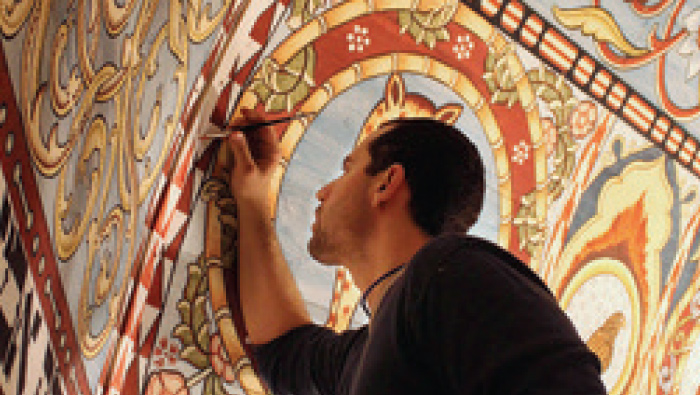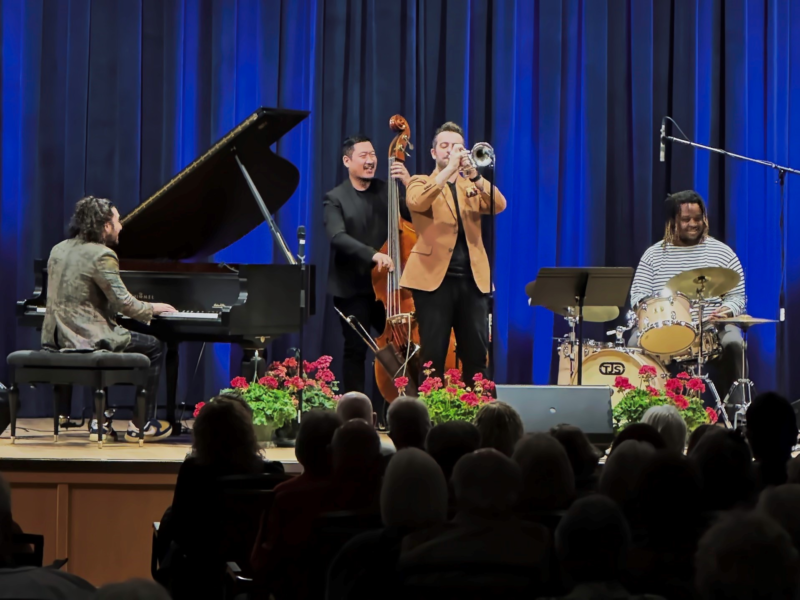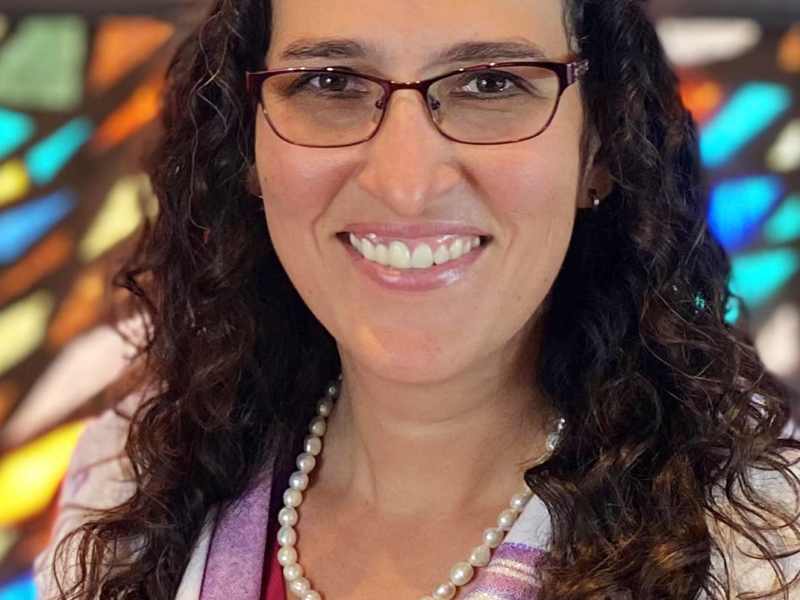Documentary “Raise the Roof” premiers Oct. 8 in Tucson
There is a profound sense of accomplishment when creating something from nothing.
Sculptors and educators Rick and Laura Brown of Handshouse Studio, handshouse.org, set out to recreate something from the ashes of war-torn Poland, and history was revealed.
“We don’t like to think of ourselves as teachers,” says Rick in a phone interview. “We are more interested in learning by doing, and we are interested through experience.”
They were determined to reconstruct Gwozdziec, a demolished Polish synagogue. Long gone but remembered for its spectacular, colorful hand-painted interior roof, the wooden 18th century structure was destroyed by the Nazis in World War II. The Browns and their team had nothing but old black and white photographs from 1914 and one color study from which to work. Gwozdziec was one of the most documented synagogues they could find.
The inspiring story is chronicled in “Raise the Roof,” a documentary by filmmakers Yari Wolinsky and Cary Wolinsky, who followed the Browns and their team to Sanok, Poland, as they undertook a seemingly insurmountable project to rebuild the synagogue’s roof using traditional tools and methods – all while facing a six-week deadline.
Creating in what Rick calls a “dynamic learning environment,” they replicated historical objects in a short period of time. “We believe that if you replicate an object using the same tools, the same methods, the same materials and the same techniques, you can uncover or recover information not only about how to make it, but learn about the culture that built it,” Rick says.
A project more than 10 years in the making
About 10 years ago the Browns learned the amazing history of the Polish Jews and the more than 200 synagogues systematically destroyed by the Nazis. They set out to take on a learning project with the goal of one day building a full-scale replica of one of the synagogues, says Rick.
“Some students stuck with us for almost 10 years and became our key people, because they were so inspired that one day we would do this – and sure enough it happened,” Rick says. More than 300 people including professionals, scholars, craftsmen and students from 16 countries were involved in the project. The documentary focuses on the replication of Gwozdziec’s ceiling, which would become an integral part of the POLIN Museum of the History of Polish Jews in Warsaw.
Working in a part of the world that was once so unwelcoming to Jews, there was “resounding acceptance” of the project, according to Rick.
“Poland was the country where the Nazis built most of the death camps,” Rick says. “Most people think it’s the place where most of the Jews were killed. After World War II, we also know there was anti-Semitism all over the world. After the war under the veil of communism they wouldn’t let anyone talk about the Holocaust or what had happened during World War II. For 65 years nobody could talk about history in any respect.”
Only after the fall of communism was the real truth revealed about what happened in Poland during the war, Rick says. “In our project we were dealing with a lot of young people in Poland. We found they wanted to know this history because nobody could ever talk about it. A good number of them found out after the fall of communism that their families were Jewish. People wanted to know this history.”
Many people do not realize that the history of Jews in Poland spanned 1,000 years before the Holocaust, and it held the largest concentration of Jews in Europe. Throughout the project, Rick says they had amazing experiences with people, including Holocaust survivors wanting to learn and take part.
Another opening; what a show
More than 7,000 people attended the museum on opening day in October 2014. As Poland is so much more than just the death camps, the museum is mostly focused on the “unique and wonderful history of Jews in Poland,” Rick says. “It’s amazing it took all those years for the doors to open to the truth.”
In reconstructing such an important part of history, Rick says the “objective was to be a dynamic learning environment for our students seeking information without any subjective opinion.”
His students realize every moment can be creative and lead to changing the world. It takes working together, collaboration, solving problems and then moving on.
“Over a period of time you make dramatic changes in yourself and the world,” Rick says.
“We’re not really building a synagogue, we’re building ourselves.”
An Arizona premiere
The Arizona premiere of Trillium Studios’ “Raise the Roof” will open the Tucson Festival of Films, Oct. 8, and the Browns will be on hand for the screening. Presented by the Tucson International Jewish Film Festival, the film will be among many others at the festival. The screening will be at the Temple of Music & Art, 330 S Scott Ave., Tucson.
The festival, from Oct. 8-10, is a collaboration of eight of the city’s film festivals and will showcase a variety of features, shorts and documentaries.
For more information about “Raise the Roof” and other films in the festival lineup and to buy tickets, visit tucsonfestivaloffilms.com. For more information about the Tucson International Jewish Film Festival, which is scheduled for Jan. 14-23, 2016, visit tucsonjewishfilmfestival.org.





